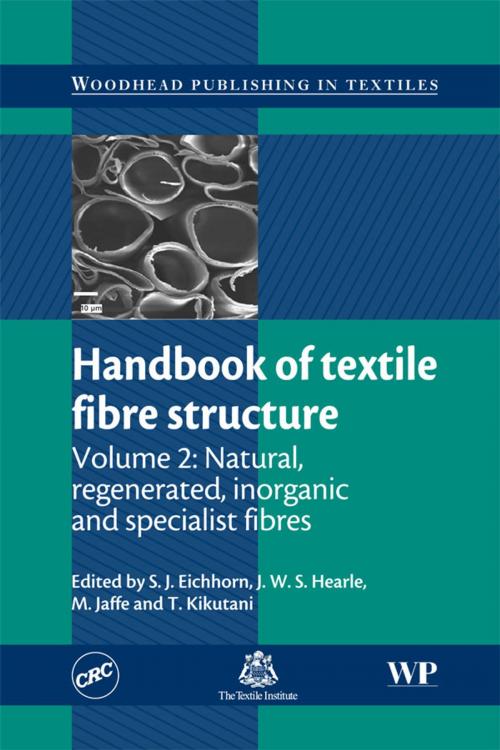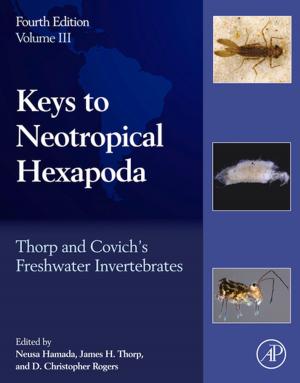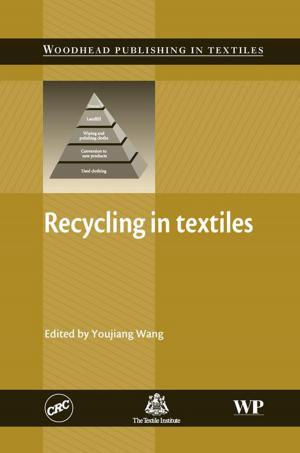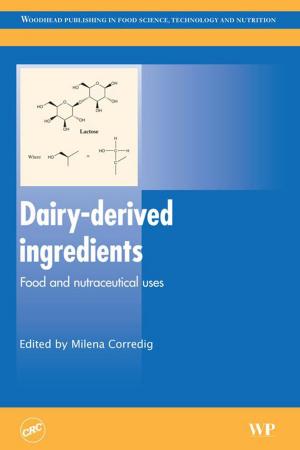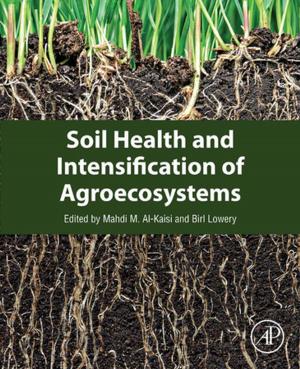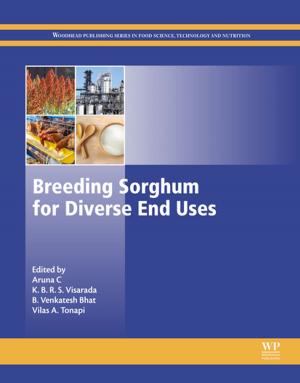Handbook of Textile Fibre Structure
Volume 2: Natural, Regenerated, inorganic and Specialist Fibres
Nonfiction, Science & Nature, Technology, Textiles & Polymers, Science, Biological Sciences, Biotechnology| Author: | ISBN: | 9781845697310 | |
| Publisher: | Elsevier Science | Publication: | October 26, 2009 |
| Imprint: | Woodhead Publishing | Language: | English |
| Author: | |
| ISBN: | 9781845697310 |
| Publisher: | Elsevier Science |
| Publication: | October 26, 2009 |
| Imprint: | Woodhead Publishing |
| Language: | English |
Due to their complexity and diversity, understanding the structure of textile fibres is of key importance. This authoritative two-volume collection provides a comprehensive review of the structure of an extensive range of textile fibres.
Volume 2 begins by reviewing natural fibres such as cellulosic, cotton, protein, wool and silk fibres. Part two considers regenerated cellulosic, protein, alginate, chitin and chitosan fibres. The final part of the book discusses inorganic fibres such as glass, carbon and ceramic fibres as well as specialist fibres such as thermally and chemically-resistant fibres, optical and hollow fibres. Chapters review how fibre structure contributes to key mechanical properties. A companion volume reviews the structure of manufactured polymer fibres.
Edited by leading authorities on the subject and with a team of international authors, the two volumes of the Handbook of textile fibre structure is an essential reference for textile technologists, fibre scientists, textile engineers and those in academia.
- Discusses how fibre structure contributes to key mechanical properties
- Reviews natural fibres such as cellulosic, cotton and silk fibres and considers various regenerated fibres
- Examines inorganic fibres including glass and carbon as well as specialist fibres such as chemically-resistant and optical fibres
Due to their complexity and diversity, understanding the structure of textile fibres is of key importance. This authoritative two-volume collection provides a comprehensive review of the structure of an extensive range of textile fibres.
Volume 2 begins by reviewing natural fibres such as cellulosic, cotton, protein, wool and silk fibres. Part two considers regenerated cellulosic, protein, alginate, chitin and chitosan fibres. The final part of the book discusses inorganic fibres such as glass, carbon and ceramic fibres as well as specialist fibres such as thermally and chemically-resistant fibres, optical and hollow fibres. Chapters review how fibre structure contributes to key mechanical properties. A companion volume reviews the structure of manufactured polymer fibres.
Edited by leading authorities on the subject and with a team of international authors, the two volumes of the Handbook of textile fibre structure is an essential reference for textile technologists, fibre scientists, textile engineers and those in academia.
- Discusses how fibre structure contributes to key mechanical properties
- Reviews natural fibres such as cellulosic, cotton and silk fibres and considers various regenerated fibres
- Examines inorganic fibres including glass and carbon as well as specialist fibres such as chemically-resistant and optical fibres
